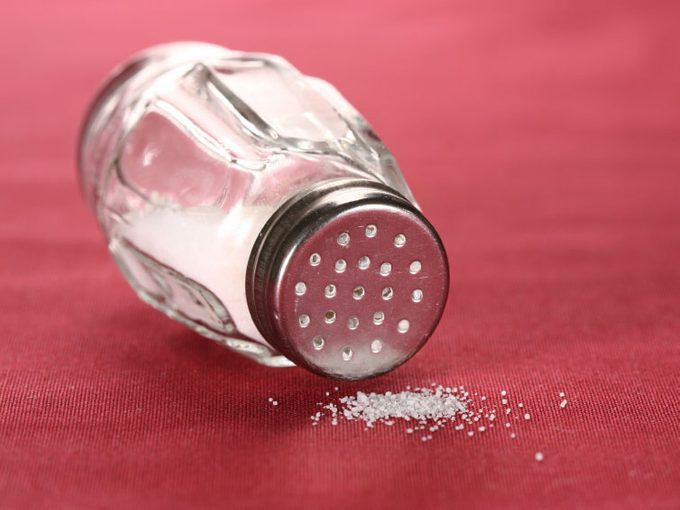How Much Sodium is Too Much?
Before your next ‘pass the salt’ encounter, learn how much sodium is too much and what you can do about it

Source: Best Health magazine, September 2015
Sodium is added to foods to enhance taste and act as a preservative. It’s also an ingredient in all types of salt, from table salt and kosher salt to sea salt and pickling salt.
Healthy adults need around 1,500 milligrams of sodium per day, or the equivalent of just over half a teaspoon of table salt. Currently, the average Canadian consumes about 3,400 milligrams per day ‘ more than double the actual requirement!
Too much sodium in our diet can be a major risk factor for high blood pressure (hypertension), which, in turn, increases our risk of heart disease and stroke. It has also been linked to an increased risk of kidney disease, osteoporosis and stomach cancer.
About 20 percent of Canadians have hypertension; of those, about 30 percent have hypertension due to elevated levels of sodium in their diet. It’s the number one preventable risk factor for stroke. The good news is, if you lower your sodium intake, you can also lower your blood pressure.
How to shake the salt?
While it’s a seemingly easy fix to back away from that salt shaker, the simple truth is that most of the sodium in our diet comes from processed and packaged foods. Sodium is hidden in the form of food additives and monosodium glutamate (MSG), both in the grocery store and restaurants, so eliminating these culprits from our diet, or reducing and selecting wisely is key. Check sodium levels on nutrition labels before buying, and look for foods with less than 360 milligrams of sodium per serving.
When eating out, check the menu, ask your server for lower-sodium recommendations or request that your dish be made without salt.
Avoid processed and cured meats, such as corned beef, pancetta, prosciutto and pepperoni, and skip sauces and gravies or, at the very least, have them served on the side for better portion control. Same goes for salad dressings and condiments.
And keep in mind that there are a number of foods with significant sodium levels ‘ whether added or naturally occurring ‘ for you to be aware of. These include bacon, pickles, canned vegetables, teriyaki sauce, soy sauce, tamari, nuts (unless unsalted), some cheeses (especially cottage cheese), olives, sun-dried tomatoes and seafood.
Going homemade is the best way to control just how much salt goes into your food. Replace common culprits like store-bought muffins, cakes and cookies with baked goods made from scratch. Brush steaks, chops, ribs, chicken and fish with a little oil flavoured with minced garlic, fresh herbs and spices before cooking. Swap frozen fries for potatoes that are chopped, tossed with oil and herbs and baked until crisp and golden. Switch out instant flavoured oatmeal for rolled oats topped with your choice of add-ins. Rinse and drain canned beans and lentils or, better yet, replace canned beans with dried ones.
At the dinner table, train yourself to taste your food before adding any salt. Lacking in flavour? Experiment with your favourite spices and herbs, or add a squeeze of lemon or a drizzle of cider vinegar to add vibrancy to a wide array of foods. Let variety be the spice of life and the spice of choice when it comes to flavouring your dishes.
Missing salt? There are a wealth of creative and flavour-packed alternatives to salt. Savour these healthy substitutes tonight:
‘ Dill on fish and vegetables
‘ Paprika in soups and salads
‘ Dry mustard on beef and vegetables
‘ Allspice or ginger on savoury and sweet dishes




